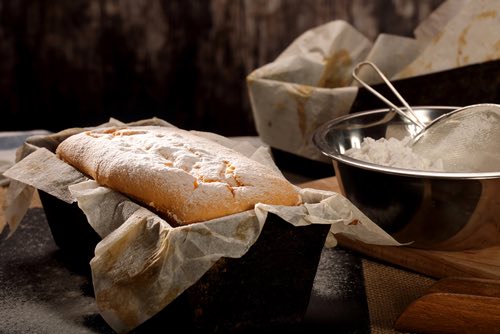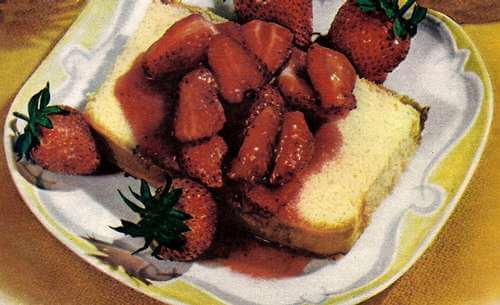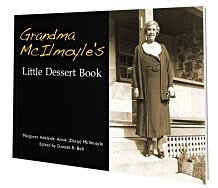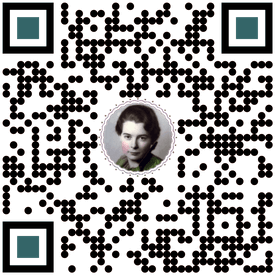Authentic Old Fashioned Pound Cake Recipes
These old fashioned pound cake recipes represent more than just dessert — they are edible heirlooms passed down through generations of home bakers. The pound cake was born in Northern Europe in the early 1700s, and it earned its name from its beautifully simple formula: one pound each of flour, eggs, butter, and sugar. This easy-to-remember recipe traveled from European kitchens to the British Isles, and eventually crossed the Atlantic to become a beloved staple in North American homes.
What makes these recipes so special is their connection to our culinary past. In an era before electric mixers and modern ovens, our grandmothers and great-grandmothers would spend considerable time "giving the batter a good beating" by hand, incorporating air to lighten these naturally dense cakes. By the early 1900s, the addition of baking soda and baking powder revolutionized pound cake baking, creating lighter textures while maintaining that signature rich taste we all remember from childhood.
Pound cakes are traditionally rich tasting, dense in texture, and large. They tend to be served plain, dusted with powdered sugar, lightly glazed, or sometimes with an unpretentious icing. Each recipe in this collection tells its own story — from basic family favorites to elaborate versions that graced the White House tables.
Old Fashioned Pound Cake Recipes
Mom's Recipe Scrapbooks (c. 1920s)
 Old Fashioned Pound Cake Ready to Top with Powdered Sugar
Old Fashioned Pound Cake Ready to Top with Powdered Sugar(Source: ©wideonet/Depositphotos.com)
Basic Pound Cake
Mom often used this old fashioned pound cake recipe for making her delicious pound cakes. Its beauty lies in its perfect simplicity, following the classic "pound for pound" rule that gives the cake its name. Try serving a warm slice with a dollop of freshly whipped cream and a handful of seasonal berries for a truly timeless dessert.
Creaming the Ingredients
This is the most critical step. It means to beat "room-temperature" butter and sugar or similar ingredients together until the mixture is light, fluffy, and pale in color. This process incorporates air, which is the primary leavening for many of these old recipes.
1 pound sugar
1 pound butter
1 pound eggs (10 medium eggs, separated)
1 pound flour (4 cups)
Cream the butter and sugar together, then add beaten whites of eggs, after the yolks, and 1/2 teaspoon baking soda dissolved in a tablespoon of milk. Put 1 tablespoon cream of tartar in flour, also a pinch of salt. Add lastly lemon essence to taste. Bake 30 minutes in moderate oven (360°F).
Dainty Pound Cake Bites
As its name suggests, this cake offers a lighter, more delicate crumb than its traditional counterpart. The combination of almond and rose extracts gives it an elegant, almost floral aroma that is simply unforgettable. It's perfect for cutting into small cubes for an afternoon tea.
1 cup shortening
1 cup sugar
4 eggs
2 cups flour
1 teaspoon almond extract
1/2 teaspoon rose extract
1/4 teaspoon salt
Cream shortening and sugar well, then beat in one half the sifted flour and salt. Then add the eggs which have been well beaten, and the extracts. Next, beat in the remaining flour. This batter must be thoroughly beaten.
Pour into a greased slightly floured pan, having the batter higher on the sides than in the center. Bake in a slow oven (325°F) about 35 minutes.
Cool, cut into cubes with sharp knife and ice or dip in fondant. (Of course, any good white icing may be used.) Then dust with silver candies, chopped nuts, or shredded coconut.
Classic Five Flavor Pound Cake
This was Mom's showstopper, a cake bursting with a symphony of flavors that keeps you guessing with every bite. The unique "cold oven" method is an old-fashioned secret that allows the cake to bake slowly and evenly, developing a wonderfully tender texture. Don't be tempted to peek before the hour is up!
3 cups sugar
2 sticks (1 cup) butter
1/2 cup shortening
5 eggs, slightly beaten
1 teaspoon lemon flavoring
1 teaspoon vanilla flavoring
1 teaspoon butternut flavoring
1 teaspoon coconut flavoring
1 teaspoon rum or almond flavoring
3 cups unsifted flour
1 cup milk
Mix sugar, butter, and shortening. Add eggs and flavorings. Mix well. Alternatively add flour and milk; ending with flour. Bake in a tube pan for 75 to 90 minutes, until tests done. Don't open oven for 1 hour. Start with a cold oven and bake at 325°F.
Old Fashioned Pound Cake Recipe From the Victorian Era
The Book of Household Management (1861)
Currant Pound Cake
Stepping back into the Victorian era, this recipe gives us a taste of a classic British pound cake. The addition of currants, candied peel, and a hint of mace creates a wonderfully spiced and festive cake, perfect for holidays or a cozy afternoon. The note about adding a "glass of wine" is a charming glimpse into the baking traditions of the past.
Castor Sugar
In the USA substitute Super Fine sugar, a.k.a. Bar Sugar. In Canada use Super Fine or Berry Sugar. These sugars are finely ground yet not powdered like icing sugars.
Ingredients:
1 pound of butter
1-1/4 pounds of flour
1 pound of castor sugar
1 pound of currants
8 eggs
1/4 pound of mixed candied peel
2 ounces of sweet almonds
A little pounded mace, if liked
Method:
Shred the peel very finely, taking equal quantities of orange, lemon, and citron. Blanch the almonds, and chop them finely. Sieve the flour onto a sheet of paper, and add the peel and almonds to it.
Put the butter into a clean bowl, and beat it up to a light cream with the hand; then add the sugar, and give it another good beating; add in the eggs one at a time, beating them after each addition of eggs, and when all these ingredients are in, add the flour and carefully mix, using a little milk, if necessary, to bring the mixture to a proper cake batter consistency.
Turn the preparation into round tins, lined at the bottoms and sides with white, greased paper.
Bake it from 1-1/2 to 2 hours (350°F), and let the oven be well heated when the cake is first put in, otherwise, the currants will all sink to the bottom.
A glass of wine is sometimes added to the mixture, but this is scarcely necessary, as the cake will be found quite rich enough without it. The above quantity can be divided in 2 or more cakes as desired.
White House Old fashioned Pound Cake Recipes
The White House Cook Book (1913)
 Pound Cake Served with Preserved Strawberries
Pound Cake Served with Preserved Strawberries(Source: Don Bell)
Imagine a delicious pound cake with a history that includes the White House itself! This old fashioned pound cake recipe is a true American classic, and the wonderful tip about preserving it in an earthen jar with brandy-soaked paper speaks to a time of resourceful, no-waste kitchens.
Mom sometimes wrapped her cake in rum or brandy-soaked paper before placing it in a cake tin. The addition of nutmeg, wine, and rose water gives it a uniquely aromatic and sophisticated flavor.
The White House Basic Pound Cake
This is the old fashioned pound cake that our mothers used to make, and it can be kept for weeks in an earthen jar, closely covered, first dipping letter paper in brandy and placing over the top of the cake before covering the jar.
Beat to a cream one pound of butter with one pound of sugar, after mixing well with the beaten yolks of twelve eggs, one grated nutmeg, one glass of wine, one glass of rose water.
Then stir in one pound of sifted flour and the well-beaten whites of the eggs. Bake a nice light brown at 350°F.
Coconut Pound Cake
This old fashioned pound cake recipe shows how the classic pound cake could be adapted with more "exotic" flavors as they became available. The use of fresh-grated coconut would have been a luxurious treat, adding a delightful chewiness and tropical sweetness. For a modern twist, try toasting the coconut for the topping to deepen its flavor.
One-half cupful of butter, two cupfuls of sugar, one cupful of milk, and five eggs, beaten to a stiff froth; one teaspoonful of baking soda and two of cream of tartar, stirred into four cups of sifted flour.
Beat the butter and sugar until very light; to which add the beaten yolks, then the milk, the beaten whites of eggs, then the flour by degrees. After beating all well together, add a small coconut, grated.
Line the cake pans with paper well buttered, fill rather more than half-full and bake in a moderate oven (350°F). Spread over the top a thin frosting sprinkled thickly with grated coconut.
First Family Citron Pound Cake
A truly festive and celebratory pound cake, citron was a prized ingredient for special occasion baking. This old fashioned pound cake recipe creates a rich, buttery cake studded with jewel-like pieces of candied citrus peel. It’s a wonderful taste of history and a perfect choice for a holiday dessert table.
Stir two cups of butter to a cream, then beat in the following ingredients each one in succession: one pint of powdered sugar, one quart of flour, a teaspoonful of salt; eight eggs, the yolks and whites beaten separately, and a wineglass of brandy; then last of all add a quarter of a pound of citron cut into thin slices and floured.
Line two cake pans with buttered paper and turn the cake batter in. Bake in a moderate oven (350°F) about three-quarters of an hour.
Rich Old Fashioned Pound Cake Recipe
The Calumet Cook Book (1916)
Calumet's Rich Pound Cake
This recipe lives up to its name, calling for a dozen eggs and meticulous preparation to create an exceptionally rich and tender cake. The instruction to sift the flour six times isn't a typo; it was a classic technique to ensure the lightest possible texture. This is the pound cake you bake when you truly want to impress.
Ingredients:
1 pound sugar
1 pound pastry flour
Whites of 12 eggs
Yolks of 9 eggs
1 tablespoon of orange flower or rose water
1/2 cup sherry
1 level teaspoon Calumet Baking Powder
Preparation:
Cream the butter, then add the sugar gradually and beat until white and curdled. Beat the yolks until thick and lemon colored, add them gradually to the creamed butter and sugar and beat fifteen minutes.
Sift the flour and baking powder six times and add to the mixture a little at a time, beat five minutes, add sherry and rose water gradually, beating all the time. Whip the egg whites very stiff, then add them lightly to the other ingredients.
Bake (350°F) in a pan with a tube, about one and one-half hours, while watching, and not allowing it to brown over the slightest until as high in the pan as it will be. This is a rule to follow in all cake making, but more particularly with a cake containing so many eggs.
Dr. Chase's Old Fashioned Pound Cake Recipes
Dr. Chase's Receipt Book (1891)
Dr. Chase's Pound Cake
Dr. Chase's recipe is wonderfully direct and to the point, a testament to practical, everyday baking. It's a simple, reliable formula that produces a classic pound cake every time. His note about keeping it moist is a reminder of how valuable and long-lasting these cakes were meant to be.
Sugar, 1 pound (2-1/2 cups); butter, 1 pound (2 cups); flour 1 pound (3 cups); 10 eggs; soda, 1 teaspoonful. Directions: Beat the yolks and whites separately; and if you wish a fruitcake, use raisins, or currants, 1 pound. (Bake at 350°F until done.)
Remarks. —It keeps moist a long time, if properly covered. For varieties sake, flavoring extracts may be sometimes used or take the Imperial Cake below, for the variety.
Dr. Chase's Imperial Pound Cake
This has to be the king of all fruit-laden pound cakes, so rich and decadent that Dr. Chase himself declared it fit for an "Imperial family." It's a celebration in a pan, packed with a pound of everything from raisins and currants to figs and almonds. This is more than a cake; it's an event.
Sugar, flour, butter, eggs (10), raisins, currants, figs, almond meats, peel (1/2 citron, 1/4 lemon, 1/4 orange), of each 1 pound, except as explained about the peel, baking powder, 3 teaspoonfuls.
Directions:
No flavoring, nor spices, are to be used. The butter and sugar rubbed together, then add the beaten eggs (10 eggs average a pound); add baking powder to the flour and put it in after the eggs; add only one kind of the fruit at a time — no flour on the fruit — but the peel and figs are to be chopped fine, the almonds blanched and split. Stir well when all is in, and bake in square tins (325°F) until done.
Remarks. —I should think it would be rich enough for any Imperial family of Europe, or for the wedding of an American, but, in this case, the company to be large, the amounts may be doubled, or trebled.
Related: Charity Cake & Poor Man's Cakes
These two recipes offer a fascinating and heartwarming glimpse into the past, showing how the spirit of a pound cake could be achieved with lesser and more humble ingredients.
They prove that a delicious, satisfying cake is about resourcefulness and heart, not just pounds of butter and sugar. Dr. Chase's remarks connecting charity and poverty are a poignant reflection of the era.
Charity Cake
Sugar, 1 cup; butter the size of an egg; 1 egg; stir to a cream; add sweet milk, 1 cup; flour, 2 cups; cream of tartar, 2 teaspoonfuls; soda, 1 teaspoonful. (Suggest baking at 325°F until tested done.) —Emily A. Hammond
Remarks. — No other place so appropriate for a poor man's cake recipe, as to let it follow charity cake, for who needs charity any more than a poor man is likely to.
Poor Man's Cake
One cup of sugar, 1 cup of milk, 1 tablespoonful of butter, 1 teaspoonful cream of tartar, 1/2 teaspoonful of soda dissolved in the milk, 1 egg, a little cinnamon, and enough flour to make it as stiff as pound cake batter. (Suggest baking at 325°F until tested done.)
Grandma's Pound Cake Success Tips
- Room Temperature is Key: For the smoothest batter, make sure your butter, eggs, and milk are all at room temperature before you begin. This helps them emulsify properly, preventing a curdled or greasy batter.
- Once you add the flour, mix only until it's just combined. Over mixing develops the gluten in the flour, which can lead to a tough, dry cake instead of a tender one.
- Pound cakes are notorious for sticking. Grease your pan thoroughly with butter or shortening, then dust it with flour, tapping out any excess. For extra insurance, line the bottom with parchment paper.
- If you're making a cake with currants, raisins, or citron, toss the fruit in a tablespoon or two of the recipe's flour before adding it to the batter. The light coating of flour helps suspend the fruit within the batter so it doesn't all sink to the bottom.
- Over baking can lead to a dry cake. Start checking for doneness a little before the recipe suggests. A wooden toothpick inserted into the center should come out with a few moist crumbs attached, not completely clean.
- A crack on the top of a pound cake is not a flaw — it's a signature! It means the crust set before the cake finished rising, and the steam had to escape. It's a sign of a good, dense pound cake.

Sign Up now for GRANDMA'S DESSERT CLUB and download your FREE PDF COPY of Grandma McIlmoyle's Little Dessert Book. Also receive my regular Bulletin featuring classic recipes and nostalgia.




